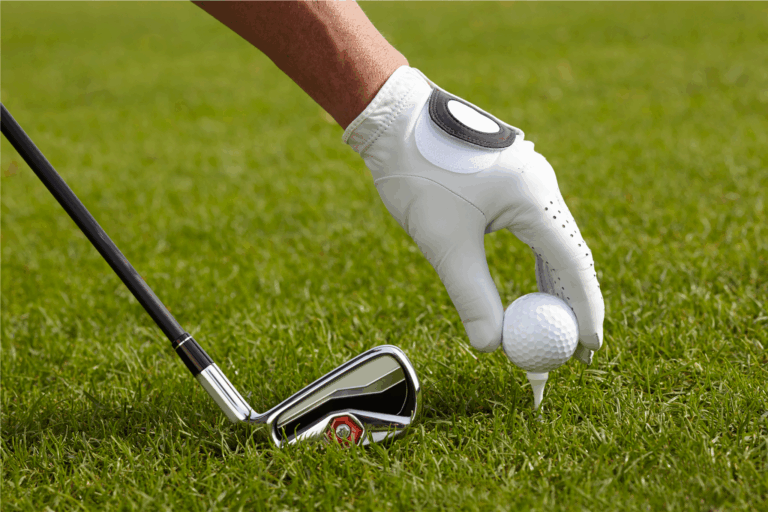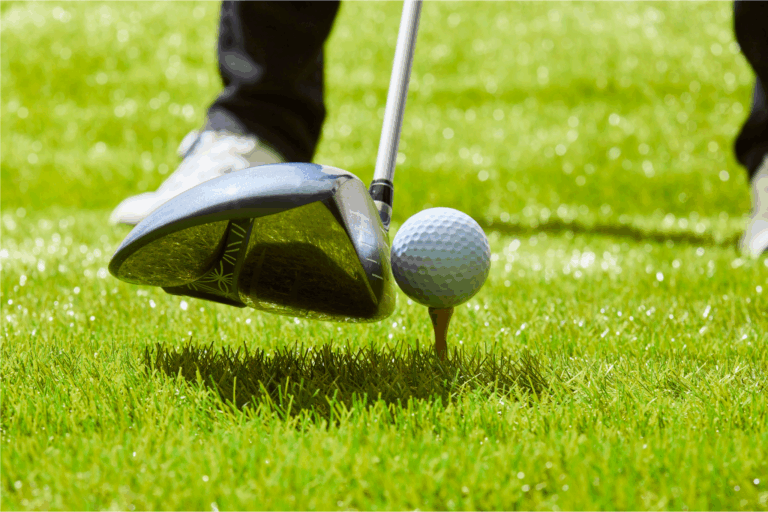Perfect Your Golf Downswing for Power and Accuracy
Stay Tuned with Latest Updates.
BY Adam Bazalgette
Posted On July 20, 2025
These perfect downswing golf tips will help you start your swing on plane for more power and consistency, letting you hit the ball farther and straighter.”The secret to both power and consistency often starts with one key move: getting the downswing started on the right plane. If you can hammer a nail with confidence, you can learn this skill.
Adam Bazalgette, PGA coach and founder of Scratch Golf Academy, explains simple steps to build a swing that delivers speed and accuracy from the start of your downswing. If you’re just getting started, beginner golf lessons in Naples FL can help you build swing fundamentals from the ground up.
Common Downswing Mistakes to Avoid
Many golfers share two habits that sabotage their downswing before it even starts.
1. Club Moves Out Toward the Ball This is where the club quickly gets away from the body as you begin the transition. Beginners and even seasoned players can fall into this habit when they’re eager to hit the ball hard. The result? Your club gets “over the top,” swinging more steeply than it should.
2. Coming Over the Top: Too Steep If you watch the swing from behind the target line, these golfers lose their ideal angles fast. Their wrists unhinge early, often because the club feels heavy at high speed. When the clubhead gets too far from your body and your wrists lose their set angle—what instructors call “lag”—you’re setting yourself up for mishits.
Why These Mistakes Hurt Your Game Losing wrist angle and letting the club move too far away from your body leads to:
This not only decreases the instant force that you can achieve at impact, but it also makes it really tough to hit the sweet spot all the time.
So, if you become aware of these mistakes and what is causing them, you can begin to reshape your downswing for better results.
What Pros Do Differently: Lessons from Billy Horschel and Charles Howell
Top golfers make the downswing look natural and repeatable. Adam Bazalgette highlights two PGA Tour pros—Billy Horschel and Charles Howell—to show what this looks like in real swings.
Visual Analysis of Pro Swings
Billy Horschel:
Charles Howell:
Together, these examples prove it’s not about keeping the club perfectly on the plane line at every moment, but about returning to it with the right sequence. The arms move down, wrists hold their angle, and the body supports the swing without getting in the way or overcompensating.
What Amateurs Can Learn from the Pros
Pros avoid “over the top” swings by:
While practicing counterswing drills, an amateur aims to copy what he has seen in professional golf. Slight details such as how much the right shoulder drops or at what point the wrists unhinge can greatly affect both the power and the accuracy of the shot.
The Hammer Analogy: Visualizing the Perfect Downswing Start
Let’s bring the concept down to Earth. Imagine putting a plank of wood or a table in front of you, with a nail sticking up. How would you hammer it? You would raise your arm and then bring the hammer straight down with force- no fancy moves.
What Golfers Do Wrong (But Never Do Hammering)
This is the kind of motion the beginning of your downswing should have.
The most crucial cue from this drill is that the wrists should feel like they’re going down toward the surface (either the ground or an imaginary table) at the start of the downswing, letting the club and arms follow in a natural and powerful motion.
Practical Tips for the Hammer Drill
Do:
Don’t:
We are talking about learning how it feels to hammer at home or on the range. Set up a bench or any flat object about where your hips would be. Imagine hammering a nail into it. What do you notice?
For extra help, try golf swing drill videos in Naples, FL to visualize and reinforce these concepts.
Join 69,000+ golfers improving their swing— start your free 14-day training here and follow us on youtube for weekly tips from PGA pro Adam Bazalgette.
The Mechanics of the Downswing: How to Blend Arm and Body Movements
Mastering the transition is all about blending, straightening and rotation. If you separate arm and body motions too much, your timing falls apart.
Straightening the Trail Arm
As the trail arm is straightened, a slight bump of the hips toward the target is another important part of setting the bottom of the swing at a point just in front of the ball, where it belongs for a perfect solid impact.
Coordinating Body Rotation with Weight Shift
The turn of your body is actually what puts all these elements together. The weight shift, or bump, should lead the arms and club but never overpower them.
Be aware of certain mistakes:
Be aware of certain mistakes:
Relax, experiment, and enjoy finding your natural timing. Getting these motions to blend will take your swing from tight and forced to smooth and rhythmic.
Troubleshooting Common Problems
Progress is gained through gentle trial and error. As Adam Bazalgette says, “Don’t get caught up in some mistakes; you can sort this out and get on to hitting powerful on-plane shots.”
Conclusion
Setting the downswing up perfectly on-plane is easier than one thinks if one knows what to avoid and focuses on a simple issue or feeling, like hammering a nail. Good coordination between the trail arm and the wrists, while the body is shifting and turning, is required.
A mate can totally pick up an unstoppable downswing alongside drilling. Get into the drills, watch the hammer analogy in action, and benefit from Scratch Golf Academy’s resources to gain further understanding. Your most consistent swing is within your grasp.
“I’ve been a Scratch Golf Academy member for 5 months and in that time I’ve lowered my handicap from a 25 all the way down to a 16. It’s a great program, and if anyone is thinking about trying it, I highly recommend it!”
-Fred Fowler
Create Your FREE 14-Day Account and start shooting lower scores today.
Recent Articles
-
How to Control Your Golf Swing for Consistency
Master your golf swing for consistent shots. Focus on swing plane, pivot, and controlled energy transfer. Practice drills like the one-hand orbit to improve rhythm, accuracy, and distance.
-
Fix Your Knee Movement & Pivot in the Golf Swing
Struggling with flipping your golf club at impact? Discover proven techniques to fix your swing, boost power, and achieve consistent, solid golf shots effortlessly.
-
How To Stop Flipping Golf Club at Impact
Struggling with flipping your golf club at impact? Discover proven techniques to fix your swing, boost power, and achieve consistent, solid golf shots effortlessly.
-
2 Key Downswing Moves for Power & Consistency
Adam Bazalgette reveals two essential downswing moves-proper weight shift and narrowing the swing arc-that help golfers strike the ball cleaner, add power, and improve swing consistency.
-
Top Golf Drills to Improve Ball Striking Consistency
Adam Bazalgette shares drills to help golfers strike the ball consistently, control the clubface, manage low point, & develop a repeatable, reliable swing for better distance & accuracy.
-
How to Square the Clubface & Master Golf Release
Adam Bazalgette explains how to square the clubface, master golf release, and use the Stop-and-Snap Drill. Learn pro tips to hit straighter, more consistent, and powerful shots.










